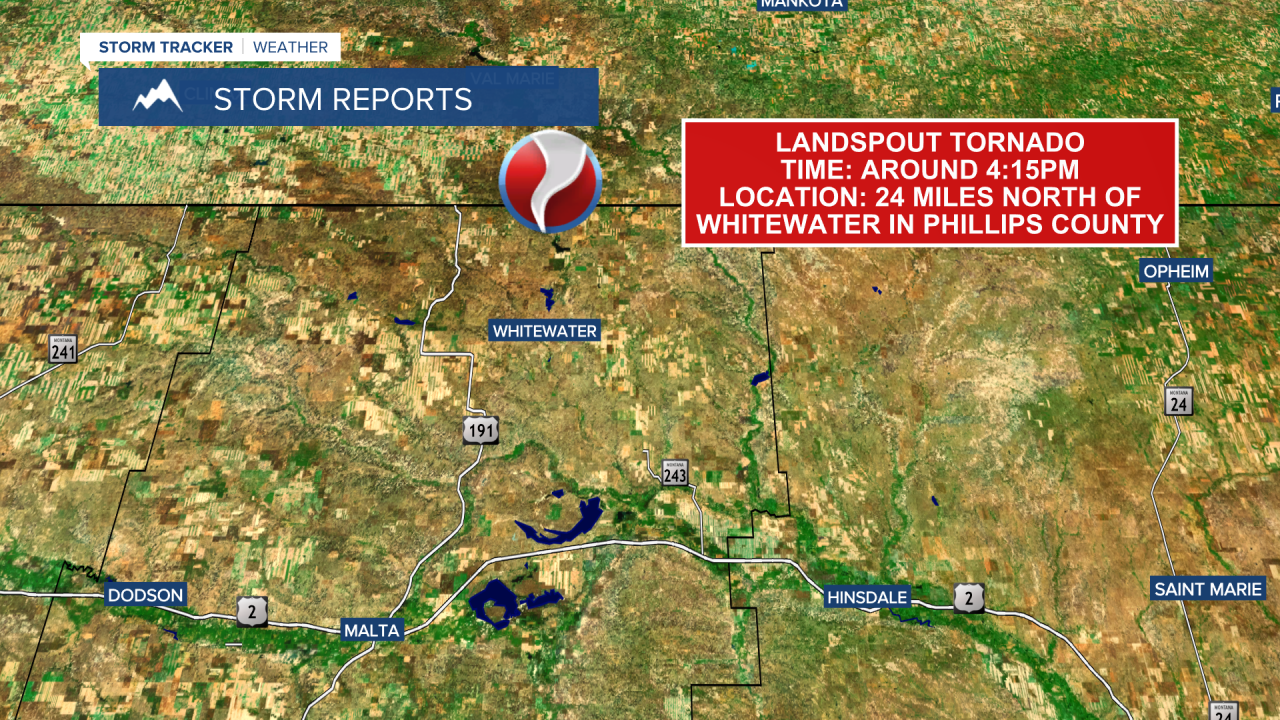There was a landspout tornado in northeastern Montana on Thursday evening (May 16, 2024).
The tornado was on the ground in the far northern part of Phillips County, about 24 miles north of Whitewater and 1 mile south of the Canadian border.
Landspout tornadoes differ from typical tornadoes as they do not occur with supercell thunderstorms.
Landspout tornadoes occur with developing thunderstorms that have no rotating updraft.
Rotation with landspout tornadoes will begin at the surface and then connect up to the thunderstorm, whereas rotation with typical tornadoes will begin in the thunderstorm and then connect to the ground.
Landspout tornadoes tend to be pretty weak and that was the case with this one.
According to the property owner, there was no damage to any buildings or vehicles. However, they may have to reseed the fields that the tornado traveled through.

Montana's tornado season generally spans from late May through early August. The two key ingredients for tornado formation are low-level moisture and wind shear.
Wind shear is the change in wind direction with height up to the mid-levels of atmosphere.
Patrick Gilchrist, the warning coordination meteorologist for the National Weather Service in Glasgow, said, "When it comes to tornadoes in Montana, it's really about moisture. So to get tornado development, we really want a moist layer right at the surface of the Earth at the lowest levels. That is provided actually by the Gulf of Mexico."
The likelihood of tornadoes increases in eastern Montana, due to the proximity to the Gulf of Mexico, not the change in topography. Higher terrain in western Montana actually acts as ignition for severe weather outbreaks as it forces the air to move vertically creating lift in the atmosphere. The severe weather outbreaks can often last through the night, traveling as far as Minnesota.
While tornadoes are less common in central Montana, the threat still exists. There have been a few notable events in recent history. An F2 moved through Lewistown back in 1999 and a series of F3 tornadoes southeast of Big Sandy in Chouteau County back in 1988.
The Enhanced Fujita Scale replaced the Fujita Scale in February 2007.
Damage assessments are utilized in determining the tornadoes scale, which can be difficult given the rural nature of eastern Montana.
Unlike those in "Tornado Alley" in the central part of the country, most Montana tornadoes are relatively small and usually touch down in sparsely-populated areas.
In 2022, an EF-2 tornado hit the community of Glentana in Valley County, causing property damage (link). The tornado was on the ground for eight miles and had an average path width of 457 yards. The maximum wind speed associated with this tornado was 120 miles per hour.
In 2016, an EF-3 tornado hit the town of Baker in southeast Montana. In 2015, a small tornado hit near Sidney in Richland County in eastern Montana, injuring one person and causing some damage.
In June 2010, a tornado hit Billings, causing significant damage to the MetraPark facility. Just several weeks later, two people were killed when a tornado struck a family ranch near Reserve in northeastern Montana.




